Let’s take a trip back to the early summer of 2008. If you took the U.S. 105 to Myrtle Beach, you may have spotted what appeared to be an oversized Gibson guitar and a gleaming monochrome roller coaster. Had you decided to pay a visit, you would’ve found yourself immersed in a world radiating colorful energy. The buildings were all bright and brand-new, the flowerbeds all impeccably trimmed, and the music — rock ‘n’ roll, to be precise — filled the air and sent your heart racing. Nearby families discussed what to ride next. A band performed at a nearby venue, one of several that park visitors could check out. You would have heard the screams of people as they went down the first drop of a nearby roller coaster.
What exactly was this place? The oversized Gibson guitar gave people the answer. Standing near the edge of a great lake, it could be spotted from anywhere in the park. Plastered over its sound hole were three words that gave the place its iconic name: “Hard Rock Park.”
A spirited tribute to rock ‘n’ roll, Hard Rock Park was the world’s first music-based theme park. Boasting rides themed after Led Zeppelin and the Moody Blues, it was supposed to be the No. 1 destination for fans of rock. Tragically, however, due to a series of mounting problems, it could never get off the ground. Theme park enthusiasts still talk about the park today, baffled at how such a place fell so quickly. If you’re interested, take a few minutes to read about the history of this old park and what it had to offer. You might just hear the distant sounds of electric guitars and joyful guests.
A Short History
Hard Rock Park’s origins date back to the early 2000s with Jon Binkowski spearheading its founding. He was already the founder of Renaissance Entertainment and the owner of the Ice Castle, a small ice rink theater in Myrtle Beach. Because most people flocked to the beach itself, Binkowski’s theater was struggling, and he needed to find the right tool to attract customers. With his background in the theme park industry, Binkowski decided to open a theme park of his own, naming it Fantasy Island. To secure financing, Binkowski met Steven Goodwin, a former executive with Rank Group, and the future CEO of Hard Rock Park.
Set on the land next to the Ice Castle, Fantasy Island was set to be themed around the four seasons of the year, with each season represented by a land. While this concept sounded fine on its own, it wasn’t enough to impress investors, who believed intellectual properties would draw in more success. As a result, Binkowski and Goodwin scrapped their Fantasy Island concept in favor of a movie-based theme park centered around MGM Studios. But obtaining the properties of MGM proved to be both difficult and expensive, so in 2002 Goodwin proposed a new, radical idea out of the blue: a park themed around hard rock.
Renowned for its restaurants, casinos and hotels, Hard Rock had been purchased by Rank Group in the 90s. Since Goodwin had worked for the company in the past, it was easy to bring Binkowski and Hard Rock’s licensing department together. It was just as easy to approve licensing — the department immediately fell in love with the Hard Rock project. Binkowski’s next task was to recruit a team of dedicated artisans to help plan the park, a feat not too difficult to complete. As the country was still reeling from the tragedy of 9/11, tourism was at an all-time low, and veterans of the entertainment industry desperately craved work. When Binkowski provided job opportunities, talented applicants came like fish to a lure.
Finances for the project were secured in 2006 for a whopping total of $400 million. Construction began that same year, with a ceremony held beforehand featuring “Mount Rockmore,” a sand sculpture with the faces of famous singers like Elvis Presley and John Lennon. After two years of hard work, the park finally opened to thousands of expectant guests in 2008. The Moody Blues, the Eagles and Bowling for Soup all performed at the opening ceremony. Binkowski, his team and Goodwin couldn’t be prouder of their work.
After entering the park, guests had access to six distinct lands: the “All-Access Entry Plaza,” “Rock and Roll Heaven,” “British Invasion,” “Lost in the Seventies,” “Born in the USA,” and “Cool Country.” Each area was extensively themed to capture the genre of rock it represented, and all of them contained attractions for every member of your typical family. A roller coaster, a kid’s area, a bar — if you can imagine it, the park probably had it. With this setup, family members could stay close at all times whenever somebody was too short or too scared to enjoy an attraction. For example, if a child was not tall enough to ride a roller coaster, they could enjoy a nearby play area instead of traveling halfway across the park to find one.
Rides were not the only aspect of the park. Besides Binkowski’s Ice Castle, which had its own spot in the park (and now went by the name “Ice House”), each area contained its own theater designed for live entertainment. The park also hosted three shows: “The Roadies Stunt Show,” “Malibu Beach Party” and a nightly fireworks show over the central lake that was in sync with Queen’s “Bohemian Rhapsody.”
But if there’s an aspect more intriguing than all the others, it’s the unconventional and humorously edgy atmosphere that tied the park together. It was no average theme park: It had acid-trip dark rides and magic mushroom swings; early-exit signs featuring chickens defecating bricks; physical gags and adult jokes sprinkled throughout; a free-for-all graffiti wall; and so much more. As Theme Park University put it, the park offered an “authentic [rock ‘n’ roll] experience … squeaky clean won’t cut it.”
Hard Rock Park was lauded by both guests and critics. Many celebrated it for its atmosphere and intricate theming rivaling that of Disney or Universal. With so much positive feedback, Hard Rock Park was sure to stand the test of time, but just like a good concert, everything had to end. And with this park, the end came sooner than anyone would’ve expected.
As ambitious as the park was, it opened at the most unfortunate of times. As the economy suffered due to the recession, gas prices rose to $4.11 a gallon (the highest at the time), and people were less motivated to travel long-distance. Myrtle Beach saw a decrease in tourism, and people that did arrive were more conscious about their spending. Instead of attending a pricey theme park, they were interested in the allure of the sea with its sand and sun and waves, all 100% free. And speaking of prices, Hard Rock Park’s pricing system was completely outrageous. It cost $50 to get in, but not just for adults — kids three years and older had to pay the exact same fare, with no discounts whatsoever. There weren’t even discounts for Myrtle Beach residents, leading them to write off the park as too expensive.
Marketing was another issue, because the people behind the park spent so little on it. Many potential visitors did not know the park existed at all, despite it featuring so many famous bands and songs. What money they did use to market the park went toward ads or billboards that were either too vague or too few and far between to attract crowds. While most tourist-populated establishments surrounding Universal Studios or Disneyland post something encouraging you to visit either park, there was no establishment to promote Hard Rock Park, as the people managing it did not work with the surrounding community.
One last reason for the park’s closure was also the reason why it worked so well. As the park did not answer to a team of faceless board members and executives, Binkowski and his team were free to do basically whatever they wanted. This explains why there are stands for free air guitars, why there is a restaurant named “Cod Piece Fish and Chips” and so on. Unfortunately, freedom from a board of directors came with the ultimate price tag: Because it didn’t belong to a big company, the park could not use it as a crutch during the recession.
Toward the end of the park’s life, the team attempted to rectify their mistakes by adding discounts and collaborating with a nearby Medieval Times restaurant, but by then, the summer was over and it was too late. With the economy declining even further, attendance rates dwindling and the park filing for Chapter 11 bankruptcy protection, the investors decided that the park was a lost cause. In late September, just five months after opening, Hard Rock Park shut its gates for the last time.
But the story didn’t end there. In 2009, a miracle occurred: The park reopened, with all the rides and shops still intact. Upon closer inspection, however, guests noticed several key differences. All of the lands, shows and rides had new names and slightly different theming; the atmosphere was lighter and toned down; and the words plastered over the Gibson’s sound hole now read “Freestyle Music Park.”
Operated by FPI MB Entertainment LLC, Freestyle Music Park opened with a more family-friendly atmosphere, rejecting the edgier tones Hard Rock Park was known for. The sole focus on rock ‘n’ roll was also rejected in favor of focusing on all genres of music, including hip-hop to rap. While fans of the old park were heavily disappointed by the changes, there were a few aspects that they had to admit were improved: The marketing crew was better at persuading people to come and the pricing was more flexible. FPI MB Entertainment was confident that, unlike the previous establishment, this park would stand the test of time. It did not.
During its short life, Freestyle Music Park dealt with the same low attendance rates Hard Rock did as the recession ravaged the country. A whopping number of lawsuits from myriad sources (up to 17 in total) were filed by embittered contractors, manufacturers, investors, the company BMW (for using ride cars similar to Mini Coopers), and even the previous owners (for copyright infringement). With so many lawsuits coming from every possible direction, the new owners were overwhelmed; they simultaneously searched for investors to finance the struggling park and attempted to pay their debts. The park was deteriorating by the minute, the buildings growing shabbier and weeds sprouting between the cracks in the pavement. When the park closed, there was little hope of recovery, and soon after, there was none. Five years later, with empty pockets and a dead park, the company sold off any and all available assets, rides included. What couldn’t be sold was left to rot.
Hard Rock Park’s story is a tragic one. Not only did the world lose its only music-based theme park, but it lost something else, as well: a park created with heart. This was the dream of a man who just wanted to support a theater, not the investment of a massive, million-dollar company. And this man and his crew were no frauds; they had genuine talent and put real care into their creation. In the next section, you can read about a few of the attractions Hard Rock Park had to offer, some of which you can’t find anywhere else.
Notable Attractions
Led Zeppelin: The Ride
With six inversions and a speed of 65 mph, “Led Zeppelin: The Ride” was built with dedicated thrill junkies and hardcore Led Zeppelin fans in mind. Standing at 150 feet, the monochrome Bolliger & Mabillard coaster could be seen from outside the park, intimidating and beckoning in potential riders.
If you’ve ever been to Disney’s California Adventure, you are probably familiar with the ride “Incredicoaster.” This roller coaster contains onboard audio that guests can listen to while riding. For “Led Zeppelin: The Ride,” it’s the same thing, but instead of hearing the Incredibles attempting to catch Jack-Jack, guests heard the song “Whole Lotta Love.” As the song lasts over five minutes — too long for a roller coaster — guests listened to the first four minutes in the queue, then finished it on the ride.
In order to secure rights to use their music, Binkowski and Goodwin spent three years flying to and from England to negotiate with Led Zeppelin’s band members, all of whom had gone their separate ways. While they were all supportive of a roller coaster featuring their music, they didn’t particularly agree on which song to use. “Stairway to Heaven” was considered first, but Jimmy Page, the founder of Led Zeppelin, thought “Whole Lotta Love” was more appropriate. Binkowski planned for the ride’s track to be changed every year and for guests to have the option of choosing which track to hear.
When Freestyle Music Park took over, “Led Zeppelin: The Ride” kept its monochrome color scheme, but its name was switched to “Time Machine” and “Whole Lotta Love” was nowhere to be heard. Instead, guests who sat in a particular row of the ride got to listen to a piece of music from a different decade: the ’70, ’80s, ’90s, etc. It was honestly a clever concept, but one that didn’t last long. After the park closed, “Time Machine” was dismantled and transported to a park in Vietnam, where it still stands today, giving guests a thrilling, albeit silent, experience.
Maximum RPM
Looking at it from the ground, “Maximum RPM” wasn’t all too special. It was your standard family coaster using Mini-Cooper-themed cars, with onboard audio that played snippets of music from various British bands. Some complained that the ride was too short and others complained that the wait times were too long. But there was one element that made this ride stand out.
Most roller coasters use a chain lift hill to pull the ride cars up to the crest of the massive first hill. “Maximum RPM,” on the other hand, defies this system by having a mechanism no other coaster like it had used before: a Ferris wheel. Cars would first roll into one of the wheel’s four gondolas, then rest as the wheel slowly rotated until the car reached the first drop above, where it would be released.
The queue for this ride also stood out in its own way. Because the lines for “Maximum RPM” would be so long, guests would quickly grow bored and testy. To compensate, Binkowski gave the queue a karaoke twist, something you would only find at a park such as Hard Rock Park. Guests could pick and choose a song, then belt out the lyrics before a crowd of strangers, all while a DJ either encouraged or humorously critiqued their performance.
When Freestyle took over, “Maximum RPM” was renamed to “Round About” in reference to the Ferris wheel element. Music from all genres would play from the onboard speakers instead of just British rock. Like “Time Machine,” “Round About” was dismantled following Freestyle’s closure and was transported to the same Vietnamese park, but it never re-opened.
Nights in White Satin: The Trip
The best has been saved for last. Possibly the most bizarre, dark ride you’ll ever see, “Nights in White Satin: The Trip” was most certainly, well, a trip. Based on the famous Moody Blues song about unrequited love, “Nights in White Satin” transported guests to a dreamlike world filled with colors, lights, sights, and smells, all synced to a powerfully haunting orchestral soundtrack and the hypnotic vocals of the Moody Blues. To complete the sensation of going on a “trip,” guests were handed a special pair of 3-D glasses that made certain colors either pop out or pull away when exposed under blacklights.
“Nights in White Satin” was constructed by Sally Dark Rides. Known for its animatronics and set design, the company faced a challenge with “Nights in White Satin: The Trip” because it did not contain any animatronics and very few physical sets. A new version of the Moody Blues song was recorded in Russia to specifically fit the ride’s narrative. When it opened with the rest of the park, “Nights in White Satin” was celebrated by guests and theme park enthusiasts for its mind-bending special effects and beautiful implementation of the song.
After the park was changed to Freestyle, “Nights in White Satin” was deemed “too inappropriate” and sadly got axed. The ride was converted into a more “family-friendly” experience, the not-quite-trippy “Monstars of Rock.” Themed around a monster rock band performing in a graveyard, this new ride essentially trampled on the body of what some deemed a true work of art. When the park closed for good, the new ride was left gathering dust.
No other ride in the world can closely match the ethereal magic of “Nights in White Satin: The Trip.” It is an experience best had in person, although it’s very doubtful that anyone will get the chance nowadays. If you’d like to have a taste of the experience, though, you can always watch Sally Corporation’s official on-ride video. Or, perhaps take a “trip” yourself.
Conclusion
For the longest time, the park sat untouched and alone, cut off from the rest of humanity. The faded buildings laid dormant and graffiti-tagged, slowly falling apart under the weight of time; weeds burst their way between the cracks of the crumbling pavement; junk littered every empty space, never to be cleaned; and the concrete blocks that served as support foundations sat idly in the overgrown grass. At the front of the property, the rusting iron gates were shut, but anyone with enough strength could open them. Vandals, explorers and the occasional homeless man were the park’s only guests. The only operating establishments were a nearby Medieval Times restaurant and two churches sitting near the old parking lot (both of which still operate today).
Several times, the property was rumored to become a spot for retail, housing or even a village where people could learn about Chinese culture, but all of these ideas fell through. At one point, it served as the backdrop for an episode of NBC’s “Revolution.” Early in 2022, however, things finally began to change. Demolition crews began clearing up the old place after over a decade of silence, reducing the decaying ruins to rubble. It’s been speculated that FedEx may use the empty space for a new facility.
Today, Binkowski and Goodwin are both in good hands. Binkowski still runs Renaissance Entertainment and Goodwin runs his own vacation rental company. While the dream is gone, it has not been forgotten by its creator. In 2017, during a panel at the Themed Entertainment Association summit, Binkowski passionately spoke about the rise and fall of Hard Rock Park in exquisite detail, presenting blueprints, concept art, construction photos, opening-day photos and things any fan of the old park would love to see.
Hard Rock Park was an endeavor that may never happen again. According to a Medium article, rock music isn’t faring so well, so the demand for an entire park surrounding it feels pretty low. But if the wind is right and we’re holding all the cards, who knows? Perhaps another dreamer may arrive and resurrect the old park, or instead bring the country a completely new and fresh experience. In an age where the theme park industry is dominated by massive companies like Disney and Universal, it’s a fine time for somebody to step in and build something from scratch. If Hard Rock Park could do it, then anyone can. All it takes is a bit of heart and talent.


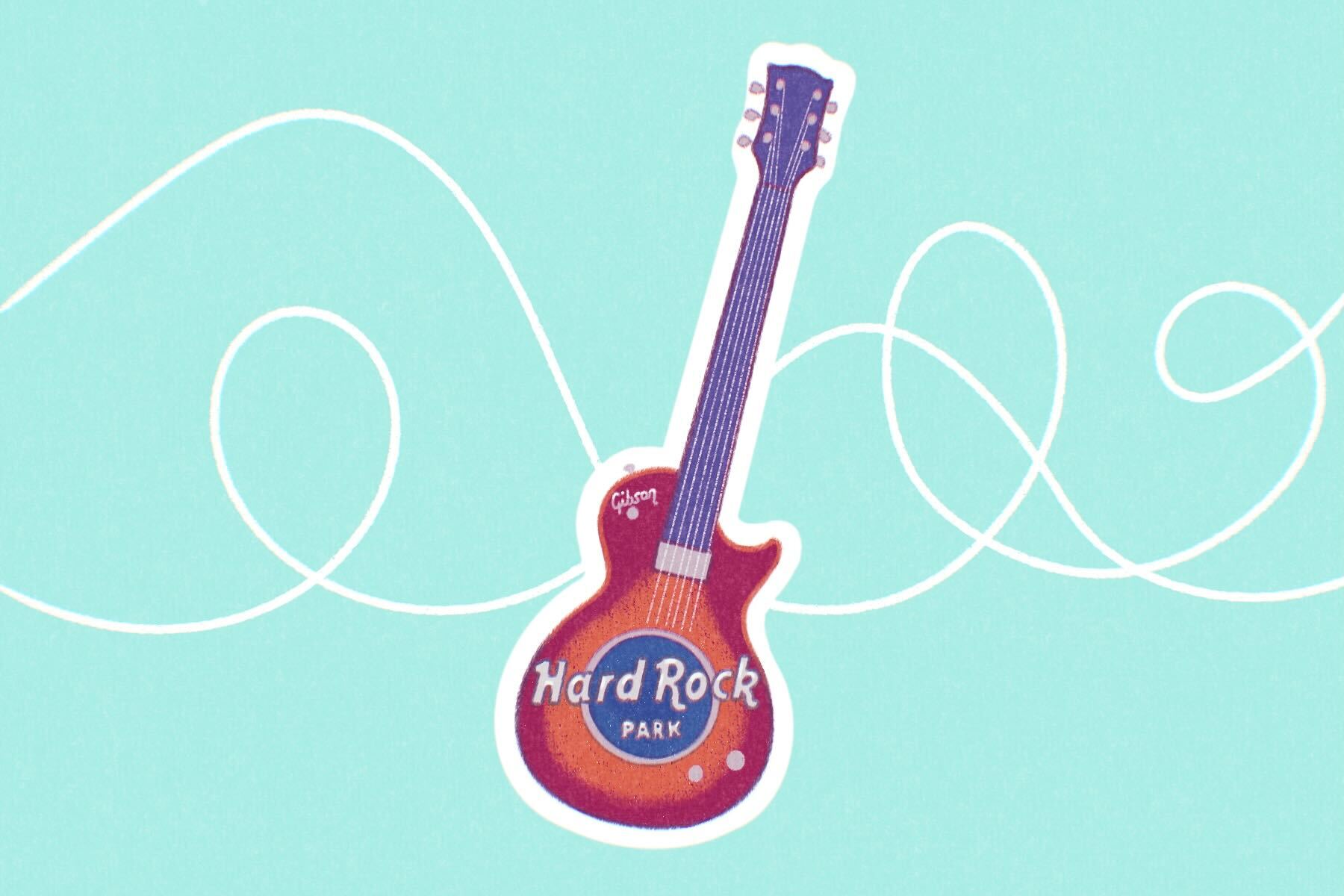


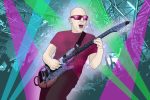
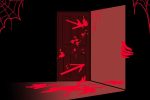
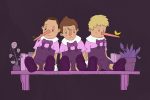
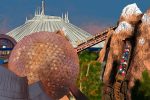

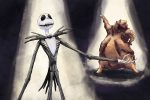
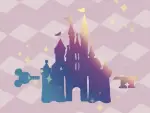





Well told! The actual idea for the park and theme of Rock N Roll came from a complete stranger on a road trip to Myrtle Beach, he was thirsty and saw a poster board along the road near the old Wakamaw Mall area that said free refreshments! He followed the signs to the parking lot in front of an ice skating theater, there was a long table set up with refreshments and cookies, he got out to see what the event was for. Near the table he met a gentleman he presumed was just like him there for the refreshments and cookies, he asked him if the refreshments were free or did it require a fee, the man responded oh it’s free, take what you like it looks like this isn’t really working out the way I’d hoped. The stranger asked how do you mean? The man then explained he owned the theater and was hoping to bring in some interest for the ice skating theater. He explained it’d been been difficult to draw tourist attention to the ice theater. He said most people especially since Waccamaw mall closed just pass right by and don’t realise it’s here. The stranger felt sadness because here the man was reaching out to draw people in, to keep a dream alive and to provide a platform for artist to work and demonstrate their skills in dance and art. The stranger asked, what is the main issue you feel is the obstacle? The owner said, the water-way over pass is just a big gate to the beach for tourist to drive thru, once they go over the waterway we’ve lost them. We get a few tourist from the Holiday Inn but it’s just not enough I’ll likely be forced to close the theater if I can’t come up with something. The stranger listened and thought about the mans predicament and then literally prayed, lord this man has greeted a me a stranger quenched my thirst and has spoken to me as a friend, how may I repay his kindness, when his need seems beyond my means… the lord reponded, but not beyond my means, you started your journey to the beach because you felt me drawing you there and this is what I called you here for. This is how I choose to work miracles thru people so there is always a witness to testify to my glory of creating something from nothing. The stranger prayed but lord what can I offer? The Lord responded, a vision of the future, look what do you see? The stranger gazed toward the high overpass that spans over the water-way and he turns to the owner and says, I know you don’t know me but I’d like to share what God is showing me here in the future. The owner said, feel free at this stage I’m open to any idea’s…
The first think the stranger said was, look there I see a roller coaster a very tall roller coaster with light, can you envision it standing there? You’ll need a theme something that tourist from all over the world can relate to, Rock and Roll music something they feel akin to no matter where they are. The vision expanded, it will be a destination draw not just for the park and Ice Theater but for Myrtle Beach itself!
What better use of the old Waccamaw Mall and parking lot than to have an all inclusive theme park located right here at the entrance over the water-way to Myrtle Beach. The roller-coaster and the bridge over the water-way become your epic brand for the Hard Rock Park, your first partner conversation for investment should be the Holiday Inn you can make this a destination like no other and your ice theater will benefit everyone will benefit.
The owner responded, wow you’ve definitely given me an idea and alot to consider, thank you.
The stranger reponded and thank you for the drink.
Sorry for the mispells and grammatical errors, writing in haste… lol.